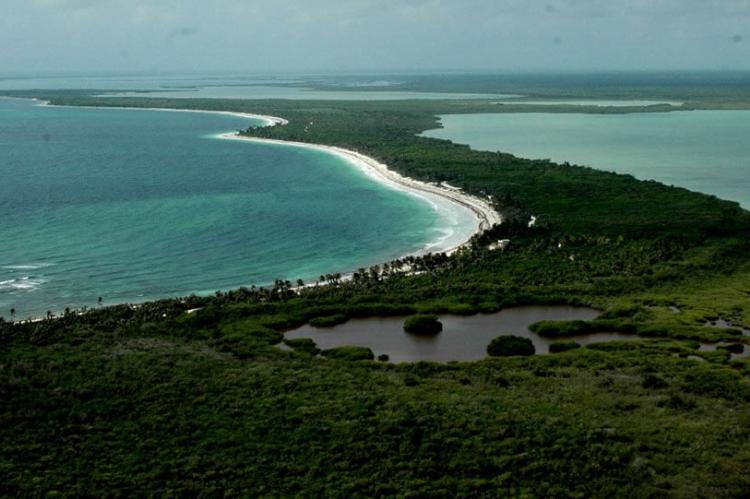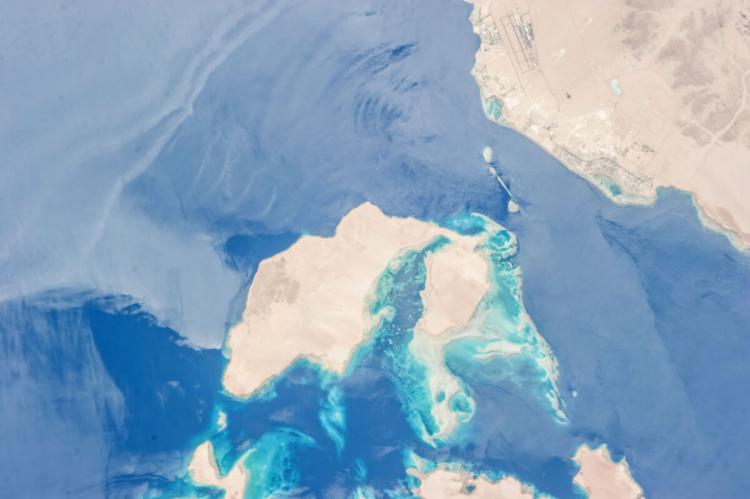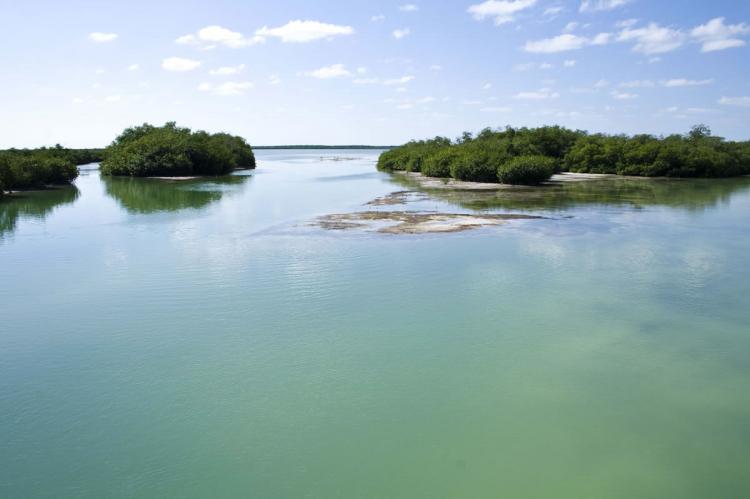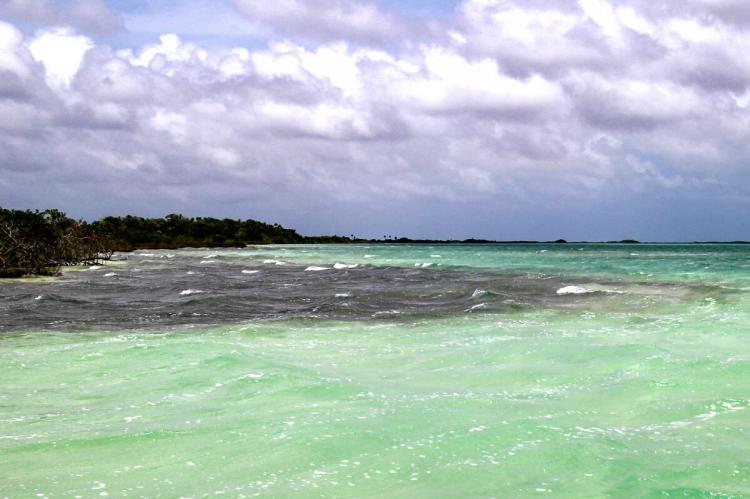Sian Ka'an Biosphere Reserve (Mexico)
In the language of the Mayan peoples who once inhabited this region, Sian Ka'an means 'Origin of the Sky.' Located on the east coast of the Yucatán Peninsula, this Biosphere Reserve contains tropical forests, mangroves and marshes, and a large marine section intersected by a barrier reef.
Sian Ka'an Biosphere Reserve
The Sian Ka'an Biosphere Reserve is located on the eastern side of the Yucatán Peninsula, on the Caribbean coast of southeast Mexico, in the State of Quintana. It contains approximately 150,000 ha (370,000 acres) of protected deciduous and sub-evergreen forests.
The Biosphere Reserve lies on a partially emerged coastal limestone plain and includes part of the extensive barrier reef system. It has a coral reef barrier, an area of seagrasses, seasonal creeks, mangroves, coastal lagoons, swamps, freshwater savannahs, inland lakes and seasonally flooded forests.
The Sian Ka'an Biosphere Reserve is covered by medium altitude semi-evergreen forests, medium and low altitude semi-deciduous forests; palm savannah formations, freshwater and saltwater marshes, petenes (or hammocks), mangroves, and dunes.
A total of 4,000 plant and 28 mammal species have been recorded, including five species of cat, jaguar, puma, Central American tapir and Caribbean manatee. Due to the great diversity of aquatic habitats, marine and wading birds are well represented.
The flora is very similar to that of the region of the Gulf of Mexico and the Antilles, with 1,048 species including algae, mosses, ferns and higher plants.
Fauna inventories show 103 species of mammals, 339 species of birds, with 219 of them residents and 120 migrant or temporary species, 90 species of native bees, 47 species of dragonflies, 74 beetles, 310 species of dipterans and 318 species of daytime butterflies. Among the marine invertebrates, mention should be made of the 84 species of coral and the 276 species of crustaceans.
Recently, new species of soil fauna have been described and named after the Biosphere Reserve. It appears to be the location in Mexico with the most similarity to the Antilles.
The Sian Ka'an Biosphere Reserve is a nesting area for turtles and sea and marshland birds and is notorious for its unique life developing in underground, flooded galleries.
Twenty-three Mayan sites have been recorded in the reserve, while Tulum, one of the most visited Mexican archaeological sites, the Chunyaxché ruins, Vigia del Lago and Xamach are just to the north.
Sian Ka'an World Heritage Site
Thousands of years ago, the original Maya inhabitants appreciated the exceptional natural beauty of this stretch of coastline, naming it Sian Ka'an, or "Origin of the Sky."
Sian Ka'an is one of Mexico's largest protected areas, established to manage 528,148 ha (1,305,000 acres) of intricately linked marine, coastal and terrestrial ecosystems. Along its roughly 120 km (75 mi) coastline, the World Heritage site covers over 400,000 ha (990,000 acres) of land ranging from sea level to only ten m.a.s.l.
The site boasts diverse tropical forests, palm savanna, one of the most pristine wetlands in the region, lagoons, extensive mangrove stands, sandy beaches, and dunes.
The 120,000 ha (300,000 acres) of marine area protects a valuable part of the Mesoamerican Barrier Reef and seagrass beds in the shallow bays. The lush green of the forests and the many shades of blue of the lagoons and the Caribbean Sea under a vast sky offer fascinating visual impressions.
About a third of the site comprises highly diverse and productive mangrove communities vital to fisheries in the broader region. Hundreds of forested islands, locally known as "Petenes," emerge from the flooded marshes, some reaching over 1 km (.6 mi) in diameter.
A geological, biological and cultural peculiarity is the "Cenotes," deep natural sinkholes harboring fascinating life forms, many endemic. This karst phenomenon results from collapsing limestone exposing groundwater.
The diversity of life in Sian Ka'an is exceptional. The tropical forests are home to charismatic mammals such as Jaguar, Puma, Ocelot and Central American Tapir.
The World Heritage property also provides a habitat for many resident and migratory bird species. There is a great diversity of marine life, including the West Indian Manatee, four species of nesting marine turtles and hundreds of fish species.





